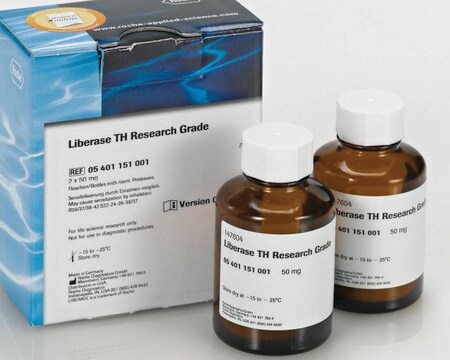840051C
Avanti
Egg PC
Avanti Research™ - A Croda Brand
Synonym(s):
Egg PC 99%
About This Item
Recommended Products
description
L-α-phosphatidylcholine (Egg, Chicken), chloroform
Assay
>99% (TLC)
form
liquid
packaging
pkg of 1 × 2.5 mL (840051C-25mg)
pkg of 2 × 20 mL (840051C-1g)
pkg of 2 × 4 mL (840051C-200mg)
pkg of 5 × 4 mL (840051C-500mg)
manufacturer/tradename
Avanti Research™ - A Croda Brand
concentration
10 mg/mL (840051C-25mg)
25 mg/mL (840051C-1g)
25 mg/mL (840051C-200mg)
25 mg/mL (840051C-500mg)
lipid type
phospholipids
phosphoglycerides
shipped in
dry ice
storage temp.
−20°C
InChI
1S/C42H82NO8P/c1-6-8-10-12-14-16-18-20-21-23-25-27-29-31-33-35-42(45)51-40(39-50-52(46,47)49-37-36-43(3,4)5)38-48-41(44)34-32-30-28-26-24-22-19-17-15-13-11-9-7-2/h20-21,40H,6-19,22-39H2,1-5H3/b21-20-/t40-/m1/s1
InChI key
WTJKGGKOPKCXLL-VYOBOKEXSA-N
General description
Application
- in the preparation of unilamellar vesicles
- in liposome preparation for proteoliposome reconstitution
- as a liposome component in lipid transfer assay
Biochem/physiol Actions
Packaging
Legal Information
also commonly purchased with this product
Signal Word
Danger
Hazard Statements
Precautionary Statements
Hazard Classifications
Acute Tox. 3 Inhalation - Acute Tox. 4 Oral - Aquatic Chronic 3 - Carc. 2 - Eye Irrit. 2 - Repr. 2 - Skin Irrit. 2 - STOT RE 1 - STOT SE 3
Target Organs
Central nervous system, Liver,Kidney
Storage Class Code
6.1D - Non-combustible acute toxic Cat.3 / toxic hazardous materials or hazardous materials causing chronic effects
WGK
WGK 3
Flash Point(F)
Not applicable
Flash Point(C)
Not applicable
Certificates of Analysis (COA)
Search for Certificates of Analysis (COA) by entering the products Lot/Batch Number. Lot and Batch Numbers can be found on a product’s label following the words ‘Lot’ or ‘Batch’.
Already Own This Product?
Find documentation for the products that you have recently purchased in the Document Library.
Our team of scientists has experience in all areas of research including Life Science, Material Science, Chemical Synthesis, Chromatography, Analytical and many others.
Contact Technical Service



